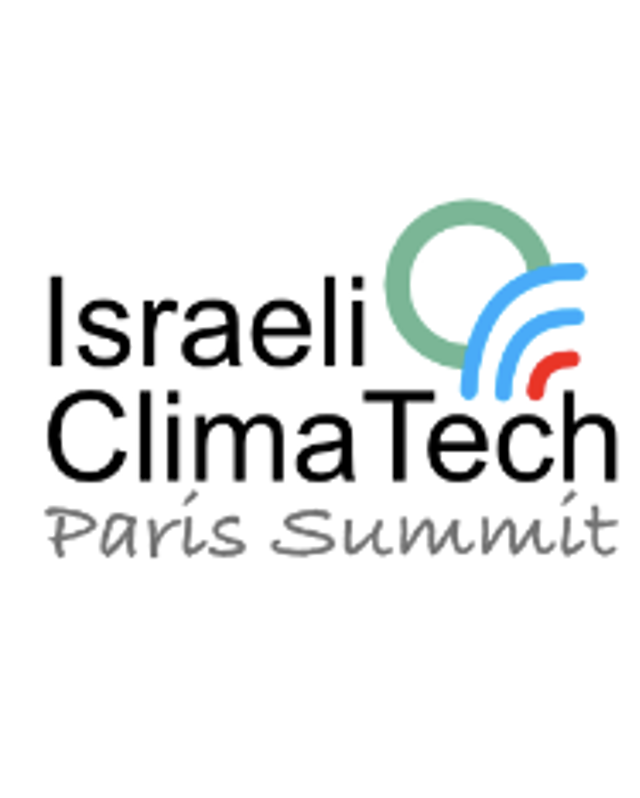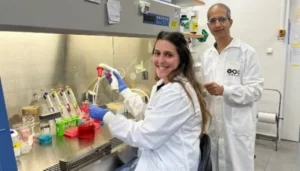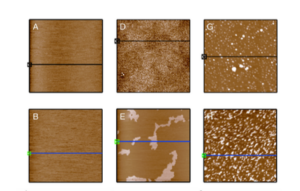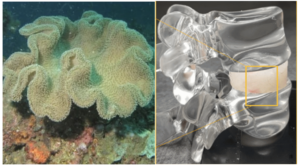En plein désert de Judée (Israël), un centre d’observation du réchauffement climatique unique au Moyen-Orient

[:fr]
Selon une récente étude du GIEC (Groupe d’experts intergouvernementaux sur l’évolution du climat) la région du Moyen-Orient est menacée par une hausse de 2 à 5° des températures et à une baisse de 24% des précipitations d’ici la fin du siècle. Mesurer les conséquences du changement climatique au Moyen-Orient est donc crucial. Un centre météorologique unique, installé au cœur des montagnes de Judée (entre Jérusalem et la mer Morte) au centre d’Israël, en pleine nature, permet de suivre l’évolution des modifications de l’écosystème dans cette zone et les défis à surmonter.
Ce centre d’observation expérimental, sous l’égide du ministère israélien des Sciences et de la Technologie, est situé sur un terrain de 4 hectares et fait partie du réseau mondial de recherche écologique à long terme (LTER). Son originalité est qu’il ne se contente pas d’analyser et de s’intéresser aux évolutions des températures et à leurs conséquences sur la flore et la faune, il s’attache surtout à étudier divers modèles climatiques en fonction des variations de la pluviométrie et leurs effets sur l’écosystème. Il y a 18 ans, quand il a été créé par des scientifiques de l’Université de Tel Aviv, il était le seul au monde à se concentrer sur la pluviométrie. Depuis, d’autres stations dans le monde ont affiché le même objectif, mais il reste toujours le seul au Moyen-Orient.
Les tendances de la pluviométrie sont des paramètres plus difficiles à appréhender que les changements de températures dans les modèles climatiques mis au point par les scientifiques. Ces logiciels très complexes dont le but est de reproduire aussi fidèlement que possible les comportements du climat terrestre dans les prochaines années peuvent prévoir les évolutions de températures mais concernant les précipitations les projections sont loin d’être unanimes. Les scientifiques sont très partagés sur l’évolution de la pluviométrie dans le futur. Mais il y a toutefois un relatif consensus concernant la région méditerranéenne où il est acquis, selon les différents logiciels, que l’on va assister à une baisse de la pluviométrie et à une aridification du climat.
De nombreuses zones au Moyen-Orient, en Asie et en Afrique vont subir une élévation des températures, souffrir d’un air plus sec et de périodes plus longues et intenses de sécheresse. Une récente étude de la NASA a récemment souligné que la sécheresse a en fait déjà commencé en 1998 et qu’elle est en train de s’intensifier dans la région orientale de la Méditerranée. D’ores et déjà il s’agit de l’épisode de sécheresse le plus intense depuis 900 ans.
 Les inquiétudes se multiplient
Les inquiétudes se multiplient
“Le changement climatique est un défi stratégique pour Israël”, explique le Pr Marcelo Sternberg, à la tête du laboratoire botanique et du département des sciences végétales à l’Université de Tel Aviv. “La convergence des effets du changement climatique, la grave crise environnementale avec la disparition des frontières entre zones urbaines et rurales, sans compter tous les conflits qui minent la région, sont des sources d’inquiétudes pour l’avenir de la zone méditerranéenne. La situation empire et il est urgent de proposer des solutions qui seront mises en place par les pouvoirs publics ».
La pluviométrie dépend de deux paramètres : la quantité d’eau de pluie et la fréquence des précipitations. Des centres d’observation comme celui du désert de Judée sont rares dans le monde et les résultats des expériences qui y sont menées sont pertinents pour Israël, pour l’ensemble de la région et aussi pour le monde entier.

“Les analyses sur le terrain, les projections et nos connaissances sont à la base de prises de décisions. C’est pourquoi il est si important de poursuivre l’étude des conséquences du changement climatique, en observant directement les conséquences sur la nature environnante. Le danger d’une élévation des températures alliée à une baisse des pluies avec de longues périodes de sécheresse va se traduire par une augmentation des incendies de forêts. C’est ce que nous essayons de prévenir, entre autres », souligne Marcelo Sternberg, responsable de ce centre.
La végétation qui entoure le centre d’observation reflète celle de l’ensemble de la région. Les chercheurs simulent plusieurs cas de figure grâce à des abri anti-pluies ou en arrosant davantage la terre avec des systèmes d’irrigation. Les effets de ces manipulations sur les paramètres de pluviométrie sont observés et étudiés ensuite concrètement sur le terrain, sur l’écosystème.
Les chercheurs ont simulé par exemple une baisse de 60% des précipitations, s’apparentant à une sècheresse extrême avec seulement 180 mm de pluies par an et une diminution de 33% (350 mm de pluies par an). Les expériences ont été également menées en jouant sur les fréquences des précipitations avec des épisodes de pluie fréquents (9 de chacun 20 mm) mais de faible intensité contre des passages pluvieux moins fréquents mais de forte intensité (3 précipitations mais chacune de 60 mm).
« Cette année nous avons commencé à étudier l’impact d’une extrême sècheresse sur la faune et la flore de la région. L’expérience va se poursuivre sur les 15 prochaines années au moins. La difficulté est de rassembler suffisamment de données sur une longue période pour faire des projections et en déduire des conclusions pour l’avenir», fait remarquer Marcelo Sternberg.
La diversité des espèces herbacées complique les études des chercheurs. Alors qu’en Europe il y a en moyenne trois à quatre différents types d’herbacées par mètre carré, dans la région on en compte entre 21 à 34 en moyenne par m2. Cette multitude d’espèces rend les expérimentations plus complexes. « Notre objectif est avant tout de concevoir un modèle climatique adapté à cet environnement et ainsi répondre à la question : comment va évoluer l’écosystème dans l’avenir quand il sera confronté à une extrême sècheresse ? », ajoute Marcelo Sternberg.
Le pire n’est pas certain
Car la nature sait s’adapter aux changements. Du moins quand les variations ne sont pas extrêmes. Ainsi les précédentes études menées par Marcelo Sternberg soulignent que, face à une faible baisse de la pluviométrie, l’écosystème de la région a su se montrer relativement résilient. Une surprise pour les experts.
Malgré la moindre pluviométrie actuelle, l’impact est pour le moment neutre sur la végétation. Pourquoi une telle stabilité ? parce que la nature sait s’adapter et on a constaté par exemple que la propagation des graines des plantes en cas de variations climatiques ne se fait plus uniquement par dispersion géographique mais de manière temporelle.
Certaines graines germent après une année alors que d’autres décident de rester « dormantes » dans la terre pendant plusieurs années pour s’adapter à l’imprévisibilité du climat, a observé Marcelo Sternberg. Il en a conclu qu’une sorte de « filet de sécurité », une régulation, se met en route dans l’écosystème dès lors que les conditions climatiques se modifient. D’une certaine manière, l’écosystème s’adapte à la sécheresse et le processus est d’ailleurs déjà en cours.
Mais en cas de variations pluviométrique significatives, la nature réagira différemment et les interrogations demeurent. C’est ce qui risque de se produire car les différents modèles en cours sur les changements climatiques laissent supposer que la baisse des précipitations sera plus importante que prévu, provoquant des hivers moins pluvieux et une pénurie d’eau dans les nappes phréatiques. Avec la nouvelle expérience sur l’extrême sècheresse Marcelo Sternberg espère avoir des réponses plus précises.
Situé entre un écosystème humide et une zone désertique
Conduire ces expériences hors des laboratoires est indispensable pour étudier les impacts réels sur le terrain mais « ces processus sont coûteux à mener en pleine nature. Notre centre est confronté à une réduction budgétaire alors que l’entretien de la station et sa maintenance induisent des coûts toujours plus élevés. L’avenir du centre est incertain », regrette Marcelo Sternberg. « Il nous faut économiser de l’argent. Parfois nous ne sommes pas en mesure de réparer les clôtures qui entourent notre centre et qui ont été franchis et coupés par des promeneurs », fait-il remarquer, ajoutant « ce site est unique et indispensable pour l’étude mondiale des changements climatiques car situé au confluent de deux zones, à cheval entre le désert et un écosystème humide ».
« A quoi vont ressembler ces collines dans quelques années ? Comment l’écosystème va-t-il réagir à une moindre pluviométrie ? » s’interroge-t-il avec inquiétude en regardant le paysage. « Les observations que nous menons dans le désert de Judée peuvent apporter un début de réponse à ces questions et nous permettront, je l’espère, de mieux limiter les effets des changements climatiques ».
Kevin Packer pour l’agence de presse Zavit
https://www.youtube.com/watch?v=obHvKW352bw[:en]
The only experimental research station focusing on climate change in the Middle East is located in the heart of the Judean Hills in central Israel. Its unique location, surrounded by nature, allows for a rare look at the changes and challenges the future most likely holds for the natural Mediterranean ecosystem.
The experimental research station, which is supported by the Science and Technology Ministry, is located on four hectares of state land and is a part of the Long-Term Ecological Research Network (LTER). This facility, founded 18 years ago by scientists from Tel Aviv University, is one of the oldest of its kind in the world studying the effects of rainfall changes on natural ecosystems and the landscape. Moreover, it is the only research station investigating these effects in the framework of climate change in the Middle East.
Changes in precipitation are much more difficult to predict for climate models compared to changes in temperature. Many models worldwide disagree as to what future trends in precipitation will be. However, there are some regions, particularly the Mediterranean, where nearly all models agree with a decrease in rainfall.
Many regions in the Middle East, Asia, and Africa predict higher temperatures, drier air, and more severe and frequent droughts. One recent NASA study reveals that the drought that has been affecting the eastern Mediterranean Levant region since 1998 is likely to be the worst drought in the past 900 years.
The perfect storm is coming
“Climate change is a strategic issue for Israel,” says Prof. Marcelo Sternberg, head of the Plant Ecology Lab at the School of Plant Sciences and Food Security at Tel Aviv University and responsible for the experiment. “The confluence of severe climate change impacts, deep environmental crisis and a web of conflicts is reason for serious concern when it comes to the future of the wider Mediterranean region. The perfect storm is approaching; therefore, proposals must reach the rooms where policy decisions are taken.”
Precipitation is characterized by two components: the amount and frequency of the rainfall. Such experiments that include both components like the one led by Sternberg are rare around the world. The findings obtained from this research are not only useful for Israel but the whole region, and even the rest of the world.
Sternberg, who set up the research station several years ago, says, “Research and knowledge give the foundation for decision-making, that is why it’s so essential to support the research of climate change.” The threat of increasing temperatures and decreasing precipitation, with longer gaps between rainfall events, will elevate the risk of forest fires. “Our facility here is all about these issues,” he says.
The vegetation surrounding the research station is native to the region, which creates an excellent environment to study how it reacts to different climate change scenarios with changing rainfall patterns. To test this, field studies are conducted that manipulate either precipitation amount or frequency by using rain-out shelters to simulate a reduction in precipitation as well as changes in rainfall patterns.
The experimental options for precipitation change are the simulation of a reduction of rainfall by 60% (meaning extreme drought – only 180 mm. of rain per year) or by 33% (350 mm.) The experimental options for precipitation frequency change are regular frequency distribution (nine rain events of 20 mm. each) versus lower frequency but higher amounts (three rain events of 60 mm. each) as expected by increasing extreme events.
An extreme drought scenario experiment with a variation of rainfall frequencies began this year, and the goal is to continue to do that in the long term (at least 15 years). “The greatest challenge in this type of experiment is to obtain data over an extended period to determine a trend and thus reach conclusions based on long-term data,” Sternberg stresses.
34 species per square meter
While in Europe there is an average of three to four different herbaceous plant species per square meter, in this unique experimental field, there is a range of 21 to even 34 plant species per square meter. According to Sternberg, the high spatial heterogeneity makes it difficult to find the effects of drought on the experimental plots. “But if we can effectively establish sampling methods, we can be precise and answer one of the most important questions: How will this ecosystem look in the future subjected to extreme drought?” Sternberg states.
Sternberg’s previous findings indicate that this ecosystem is relatively resistant to small rainfall decrease. However, future climate change scenarios predict a more significant reduction in rainfall, causing winters in Israel to have fewer rainfall events and higher soil water deficit. Therefore, in Sternberg’s new experiment, he hopes to find out how the system will respond to these predicted changes.
The examined vegetation at the station looks stable even under the current precipitation conditions. This is because the plants disperse their seeds not only spatially but also over a specific period of time. For example, in a previous study, when Sternberg controlled seed germination in soil samples, he found that only some of the seeds germinated after one year, while others stayed dormant for a few years. He concluded this was a type of “ecosystem insurance” in case environmental conditions did not favor seedling survival, which shows that drought adaptation is already part of the system.
Between deserts and humid ecosystems
“It is not easy conducting this type of experimental research outside the lab,” Sternberg says. The research station is confronted with several problems, one being the lack of budget. The research funding ends next year, and despite the experiment’s progress, the high maintenance costs (technicians, researchers, students, lab analysis, equipment, etc.) make further operation uncertain. Many of the procedures are done with few to no resources. “All is done ‘in-house’ to save money such as repairing the fences to prevent unauthorized people from trespassing, among other activities,” Sternberg says.
Sternberg notes, “people sometimes cut the fence of the research station to shorten the way to a nearby spring, grabbing sensors from the floor out of curiosity and damaging the experimental system.” The station has regrettably experienced theft. “The solar panels that powered the meteorological research station were stolen, and ironically, the fence to prevent theft was also stolen,” Sternberg adds.
The research station is an issue of national and international interest given its uniqueness and the fact that Israel is located on the transitional zone between deserts and humid ecosystems.
“In this country, everything is so condensed that the boundaries between natural and urban areas are disappearing. We are losing many open green areas, and the urbanization rate is increasing at an unprecedented rate,” says Sternberg, while explaining why it’s so important to study the effects of climate change on the natural environment.
What will these hills look like in the future? How will Israel’s natural ecosystem react when precipitation in the region changes? The observations and manipulations in the Judean Hills may very likely hold the answer to those questions and also the necessary means to mitigate the effects of climate change. Support for these types of experiments all over the world is critical for understanding what expects us in the future. “National funding agencies should join forces in an effort to secure the continuity of this unique and essential research,” Sternberg concludes.
[:]







